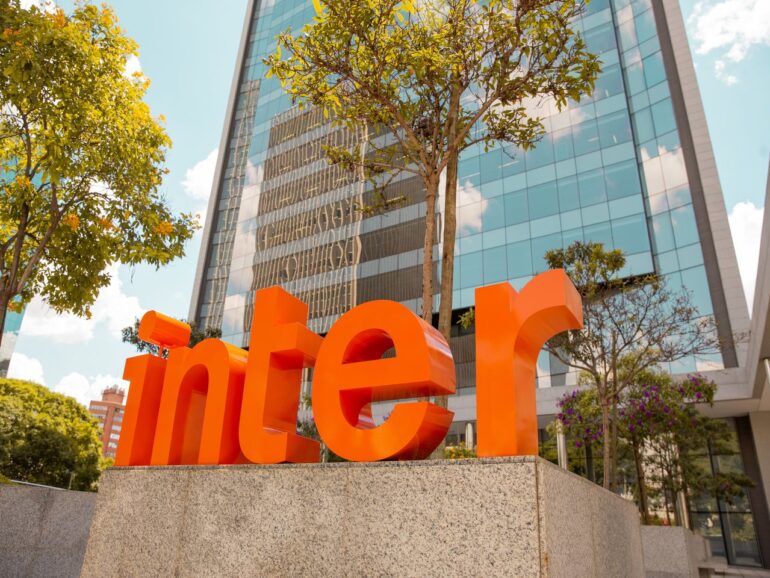Nasdaq-listed Inter is making waves in the world of Brazilian neobanking after announcing a major customer acquisition milestone. In December, the two-billion-dollar firm reached 30 million customers, cementing its place among the neobanks vying for big banks’ share in Brazil.
The Belo-Horizonte-based neobank boasts a so-called “super app” in Brazil, providing clients with various financial services. Inter has also branched out to the U.S., seeking to expand its global footprint and develop a clientele for its global products. “This is our major focus at the moment,” João Vitor Menin, CEO of Inter, told Fintech Nexus in an exclusive interview.
Unlike other neobanks, Inter was founded as a financial institution in 1994. According to its chief executive, this know-how gives it an edge by offering a more complete range of services than its competitors. He claims the market for digital banks is already established in Brazil, with little room for disruptors in the short term.

Digitization in Brazil has been swift in recent years, especially after the pandemic and the central bank’s significant innovations such as instant payments Pix and Open Banking. A short list of digital lenders has quickly risen to the challenge, signing up millions of clients in recent years. Others have also withdrawn in the face of fierce competition and what some analysts have called signs of market saturation.
Shares of Inter surged in recent months following a reversal of losses in the third quarter, the latest illustration of how neobanks in Brazil are proving to investors that their business model can be profitable. Other digital lenders have also turned losses around recently, unleashing greater appeal for digital banking stocks recently.
With 30 million customers, the fintech is now one of the largest in Brazil by number of customers. Digital bank and competitor Nubank still leads the way with 75 million active customers in Latin America, although it mostly comprises Brazilian customers.
The following conversation has been edited for length and clarity.
What is the profile of your customer?
About 85% of our clients, maybe even more, were already banked before. We’re not banking the unbanked in Brazil but improving financial services for those previously overcharged and underserved by incumbent banks.
How can you seduce customers from Brazilian banks that have been dominant for decades?
The key thing is you need to have a killer product. If it is good, people are going to refer it spontaneously. That saves billions in acquisition costs. The main thing is convenience. That is, combining everything into one app where you can do anything from there. And it’s cheaper. So we don’t need to charge clients many fees that don’t make sense to us. We don’t have that old legacy system, which is a burden, and we can offer better yields because of that.
There are some growing concerns about a saturated neobank market in Brazil. What is Inter’s view on this?
The market will always eventually reach a point of saturation. What we need to do is position ourselves in a differentiated way. Currently, individuals are trying out all the different offers in the market, which is good because they are learning how to operate digitally. Eventually, users will grow tired of switching apps for banking, insurance or investments. And this circles back to the idea of convenience. Other neobanks might not have our full array of products, which may lead these customers to try our own. I think we can grow our customer base not only from incumbent banks but from fintechs as well.
Would you say there is still room for disruptors in the market?
The market in Brazil for the next five years is already established. There might still be room for new entrants, as there always is with innovation. Still, I would say that as of today, three or four sizeable neobanks are competing with the incumbent banks, and that is likely how the market will be for the next five years or so. Neobanks will continue to take market share from large banks. It is not a matter of whether banks are willing to react. They just can’t. Because of how long it takes for them to launch a new product or because of their legacy IT systems. Many have executed dozens of M&As during their business, and it is hard to integrate everything. I do not see how incumbent banks can react to the digital guys. And I do not see another sizeable digital bank emerging either.
What is the product strategy going forward for Inter in Brazil?
Day-to-day banking was the entry point for disruptors. Currently, Inter has an 8% market share of Pix in Brazil. But we only have about 1.5% market share in lending or 1.2% in investments. We will catch up on these other products with upselling and cross-selling, improving the monetization of our 30 million customer base. In the beginning, neobanks were good at onboarding millions and launching products. But can they be profitable? I believe we have proved this year that this is a sustainable business. We have been investing in products and have almost everything in place. There is no need to launch another twenty products. We did that already. Now is the time to reap the harvest.
What is the relevance of credit in Inter’s strategy in Brazil?
It’s very important both for monetization and engagement. We are not a startup; we used to be a traditional bank, underwriting credit for over 20 years. We know how to do it and have almost all the lending products already available in our app. So Inter does not need to launch auto loans, mortgages or whatever. We have that already. In Brazil, everyone wants to get credit. The debt service is often too high. So if you can improve this, they are going to (pick you).
What is the outlook for 2024?
Last year, we had much more of a headwind with interest rates peaking and inflation. For the next two years, it looks like we will have better interest rates, more favorable inflation, lower delinquency and better cost dilution because of the size. I would say there is much more of a tailwind for the years ahead, probably operating in a better economic environment than we have in the past.


